Accepted Scientific Name: Frailea pumila Britton & Rose
Cactaceae (Britton & Rose) 3: 209. 1922 [12 Oct 1922] Britton & Rose
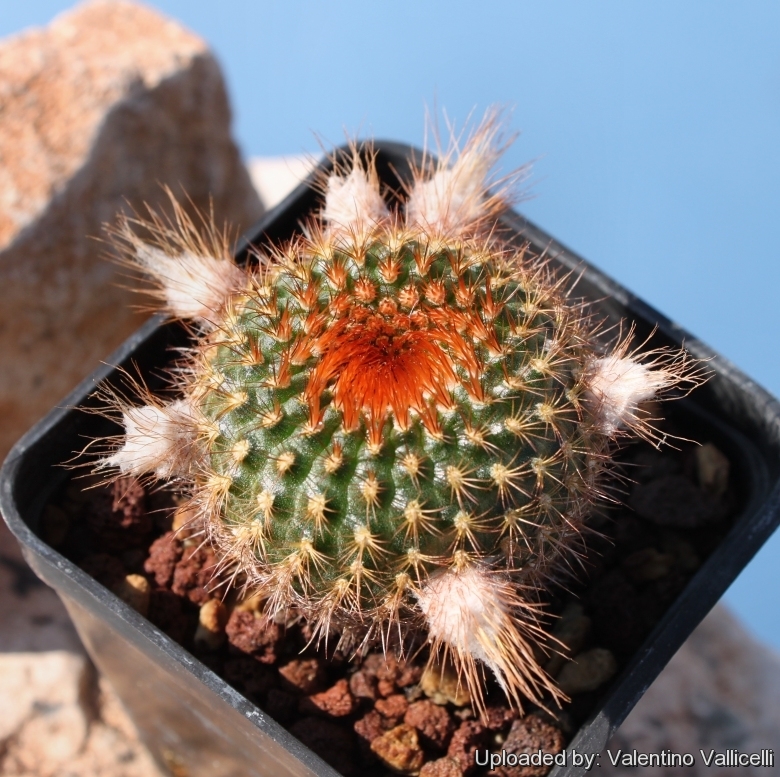
Frailea pumila f. rubrispina Photo by: Valentino Vallicelli
Origin and Habitat: This plant is a selected form found in cultivation only, originated from standard Frailea pumilaSN|2188]]SN|2188]] which occurs naturally in Argentina, Brazil, Paraguay and Uruguay.
Synonyms:
See all synonyms of Frailea pumila
back
Accepted name in llifle Database:Frailea pumila Britton & RoseCactaceae (Britton & Rose) 3: 209. 1922 [12 Oct 1922]Synonymy: 45
Accepted name in llifle Database:Frailea pumila subs. deminuta (Buining & Bredero) PrestléGattung Frailea (Br. & R.) Prestlé 170 (1997)Synonymy: 3
back
Description: Frailea pumilaSN|3597]]SN|2188]] f. rubrispina is a morphological form of Frailea pumilaSN|2188]]SN|2188]] distinguished from the latter by the red coloured young spines. The differences with other Frailea pumilaSN|2188]]SN|2188]] are in reality very minimal and the two plants are not readily distinguishable, if not for the colour of the new spines.
Habit: Plant cespitose, sprouting around the base to form clumps.
Roots: It has a well-developed contractile tuberous root system. These tuberose roots have the function of storing enough sustenance so that plants can survive the periods of drought that they have to endure. Tuberous roots also have the function of anchoring the plants into the ground.
Stem: Sub-globular, flattened and umbilicate at apex, 2-5 cm in diameter and 2 cm high, deep green, sometimes becoming reddish.
Ribs: 13 to 20, flat, more distinct than in the related species, more or less tuberculate.
Areoles: Small, nearly circular.
Spines: All pubescent, 1-5 mm long, brownish (red on new growing apex) not readily distinguishable as centrals and radials
Radial spines: 9 to 14, setaceous, more or less appressed.
Central spines: 1-2(-3), erect.
Flower: 2 cm long, yellow; axils of scales on the ovary and flower-tube woolly and setose.
Fruits: Green.
Seeds: Smooth, brown, obovate, 1,5 mm long, angled on the back; depressed hilum much smaller than in Frailea cataphractaSN|2188]]SN|3597]].
Subspecies, varieties, forms and cultivars of plants belonging to the Frailea pumila group
Bibliography: Major references and further lectures
1) Edward Anderson “The Cactus family” Timber Press, Incorporated, 2001
2) James Cullen, Sabina G. Knees, H. Suzanne Cubey "The European Garden Flora Flowering Plants: A Manual for the Identification of Plants Cultivated in Europe, Both Out-of-Doors and Under Glass" Cambridge University Press, 11/Aug/2011
3) David R Hunt; Nigel P Taylor; Graham Charles; International Cactaceae Systematics Group. "The New Cactus Lexicon" dh books, 2006
4) Nathaniel Lord Britton, Joseph Nelson Rose “Cactaceae: Descriptions and Illustrations of Plants of the Cactus Family” vol. 4 The Carnegie Institution of Washington, Washington 1923
5) A. Guillaumin “Cacti” C. Lockwood & Son, 1955
6) John Borg “Cacti: a gardener's handbook for their identification and cultivation” Blandford P., 1970
7) Port. Metzing, D & Kiesling, R “Notes on the diversity, biology, and taxonomy of Frailea (Cactaceae).” Bradleya 24: 115-128. 2006
8) Ritter, F “Kakteen in Sudamerika.” Volume 1. Privately published, Spangenberg. 1979
9) Marlon C Machado “Fascinating Frailea, Part 2: Review of the species from Rio Grande do Sul“ Cactus World (BCSS) Volume 25 No. 2 June 2007
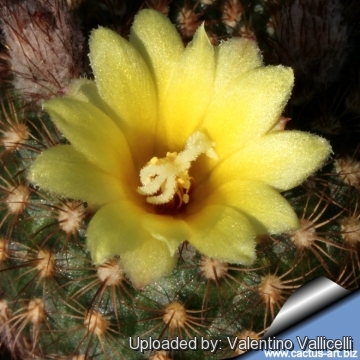 Frailea pumila f. rubrispina Photo by: Valentino Vallicelli
Frailea pumila f. rubrispina Photo by: Valentino Vallicelli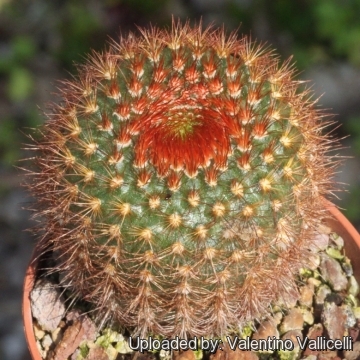 Frailea pumila f. rubrispina Photo by: Valentino Vallicelli
Frailea pumila f. rubrispina Photo by: Valentino Vallicelli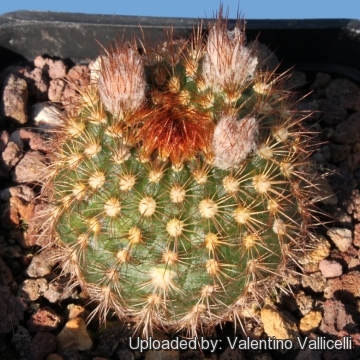 Frailea pumila f. rubrispina Photo by: Valentino Vallicelli
Frailea pumila f. rubrispina Photo by: Valentino Vallicelli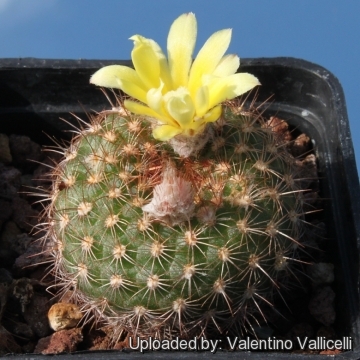 Frailea pumila f. rubrispina Photo by: Valentino Vallicelli
Frailea pumila f. rubrispina Photo by: Valentino Vallicelli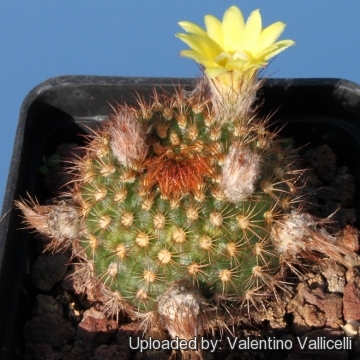 Frailea pumila f. rubrispina Photo by: Valentino Vallicelli
Frailea pumila f. rubrispina Photo by: Valentino Vallicelli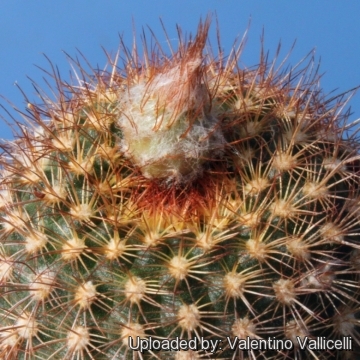 Frailea pumila f. rubrispina Photo by: Valentino Vallicelli
Frailea pumila f. rubrispina Photo by: Valentino VallicelliCultivation and Propagation: Frailea pumilaSN|2188]]SN|2188]] f. rubrispina is a summer grower species relatively easy to grow. It is sometime seen as a grafted plant but grows very well on its own roots too. Characteristically, during the dry season plants retract completely under the ground both in the wild and in cultivation too.
Growth rate: Fraileas are relatively short-lived plants, only lasting few years (rarely more than 10-15 years in cultivation) and, possible annuals in habitat! In fact they reseed readily around the base of the mother plant from self-set seed if kept reasonably moist during warm weather. It is a
good idea to keep restarting them from seed; what looks like a healthy big plant may suddenly die of old age without warning.
Soil: Use mineral well permeable substratum with little organic matter (peat, humus), plants may become too elongated if compost is too rich.
Repotting: Re-pot every 2 years. Use pot with good drainage.
Fertilization: It grows much faster with a low nitrogen content fertilizer in spring and summer. Potassium helps maintaining the plants compact and healthy.
Watering: Requires careful watering to keep plant compact. Water sparingly from March till October, the thin, fibrous roots suffer if there is humidity, therefore the plant should be watered only when the surrounding terrain is dry. Keep dry as soon as the temperature starts dropping in October and keep it perfectly dry in winter at temperatures from 5 to 15 degrees centigrade.
Hardiness: They need a minimum temperature of 5-10° C (but occasionally temperatures of a few degrees below 0° are not dangerous if kept on the dry side prior to, and during, cold weather). It tends to rot in winter during the resting phase, if kept wet. In the rest period no high atmospheric humidity!!
Sun Exposure: Light shade to full sun, its colour tends to richer and darker when grown in light shade. In a shaded position the plants grow faster, but are not flat shaped and dark coloured.
Uses: It is an excellent plant for container growing. It always looks good and stays small.
Pests & diseases: It may be attractive to a variety of insects, but plants in good condition should be nearly pest-free, particularly if they are grown in a mineral potting-mix, with good exposure and ventilation. Nonetheless, there are several pests to watch for:
- Red spiders: Red spiders may be effectively rubbed up by watering the infested plants from above.
- Mealy bugs: Mealy bugs occasionally develop aerial into the new growth among the wool with disfiguring results, but the worst types develop underground on the roots and are invisible except by their effects.
- Scales: Scales are rarely a problem.
- Rot: Rot is only a minor problem with cacti if the plants are watered and “aired” correctly. If they are not, fungicides won't help all that much. To prevent rottenness it is also advisable to surround its root neck by very rough sand or grit, this help a fast water drainage.
Propagation: With fresh harvested seeds or (rarely) by grafting. Fraileas set seed (when well grown) and grow easily from seed. In fact, they are reported to set seed even if the flower doesn’t open. This self-fertilization is called cleistogamy. Seedlings dislike strong light and dry conditions and need to be repotted frequently during the first few years. However, old plants become senile and have a tendency to succumb to disease and a weak root system. At this stage, as is well known, they die suddenly. So, after they reach about 4-5 cm in diameter grow them slowly, and adopt a new repotting period, using intervals of every 3-4 years. Additionally grow them under drier conditions or with stronger sunlight. But plants are sometine grafted to accelerate growth, but the grafted plants are typical rather tall growing, compared with plants on their own roots that are usually more flat to the ground.

















